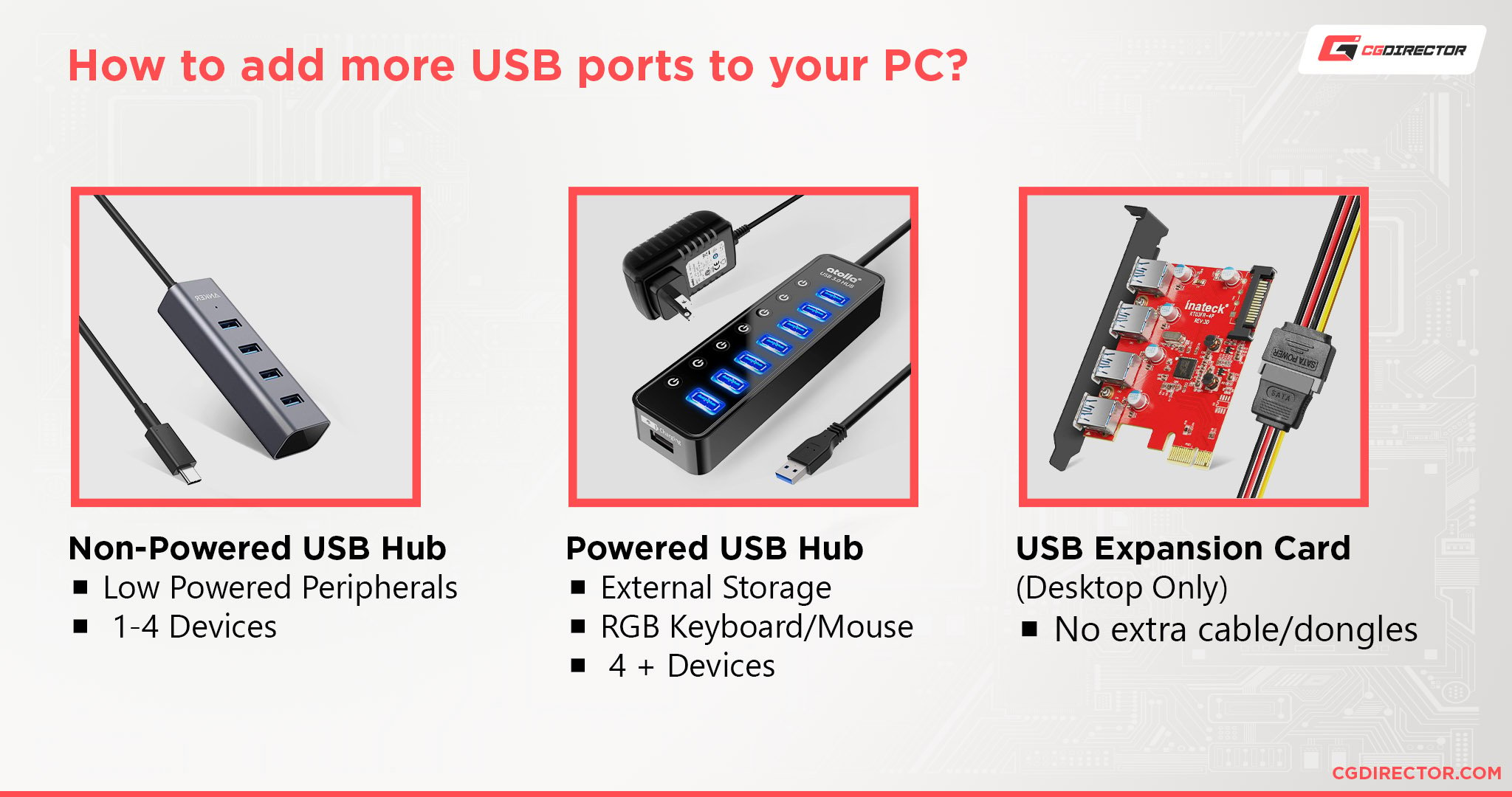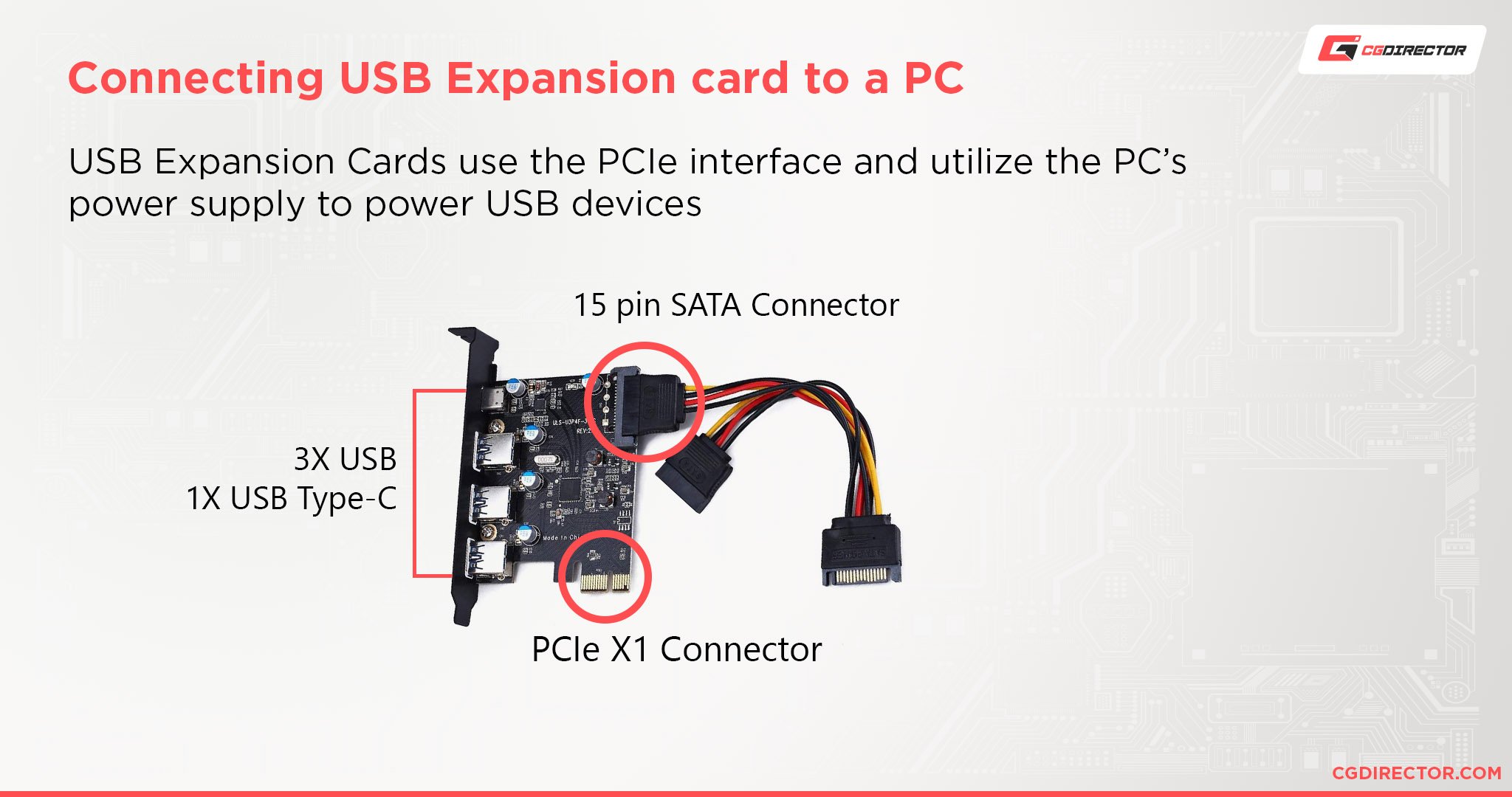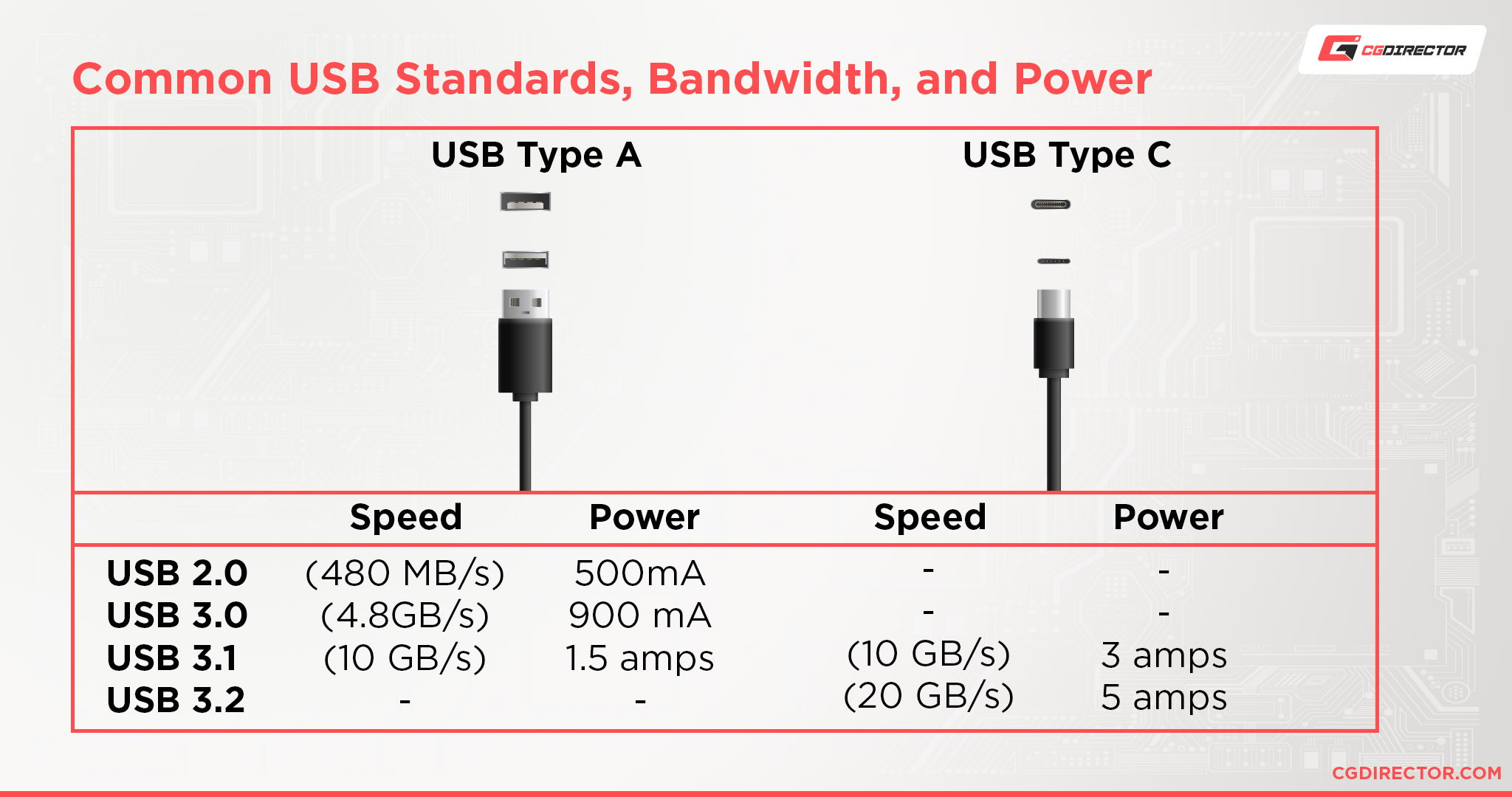How To Add Internal Usb Port In Laptop
Let's find out how to add more USB ports to a PC, and answer all the important questions surrounding this upshot.

Method one: Utilise A USB Hub
The first and almost obvious solution would exist to get a USB hub.
Chances are high you're already familiar with USB hubs; they're like to ability strips in the way that they turn one outlet into many.
Even so, that isn't necessarily the full story, especially with today'southward high-power USB peripherals and external storage devices.
While a USB hub should piece of work well with merely about any device, you may desire a powered USB hub instead.
We'll discuss the reasons why you may want to opt for a powered USB hub over a standard non-powered USB hub, only in full general, you'll almost certainly want a powered hub for external storage or iv+ devices being fastened at once.
For just a few extra USB ports for low-ability devices, a non-powered hub like this i should practice the play a trick on.
Method 2: Use A USB Expansion Card (Desktop PCs Only)
If yous don't want to lug an extra hunk of electronics effectually just all the same want extra USB ports inside your PC, yous may exist in luck.
As long as you have an unused PCI Limited expansion slot inside of your PC, you lot tin snag a USB expansion card like this one to increase your number of powered USB ports without needing to employ a hub.

Unfortunately, you won't exist able to employ this choice with a laptop, and compatibility with HTPC and Mini ITX builds may be problematic.
If y'all're using a Mid Tower or larger and have a Micro ATX or larger motherboard to match, though, this is a keen solution.
However, many USB expansion cards will require you to connect SATA power to them inside your case, so make sure yous don't forget to connect those!
FAQ
Exercise I Need A Powered USB Hub?
If the devices that yous're connecting require power (high-terminate keyboards, game controllers, external storage, etc), then yous may want to consider a powered Hub over a non-powered Hub.
While this reduces the convenience factor introduced by a USB hub in some cases, the fact is that individual USB ports can only supply so much ability.
I've personally see many problems where a non-powered USB hub simply didn't practice the play a joke on.
A non-powered USB hub will accept more bug with random disconnects and other issues considering of the lack of raw power, especially when you want 5+ USB ports on a hub.
Smaller (4 ports or less) hubs with more reasonably-powered devices (non-backlit kb/k) can work fine, but generally, I would recommend a powered USB hub.
If y'all're only plugging in a single actress device or two and y'all're confident that information technology doesn't have high ability requirements, and so getting a non-powered USB hub is fine.
For the majority of users, especially professionals and gamers, though, I'd recommend a powered USB hub.
What Port Should I Connect My USB Hub To? Does It Matter?
Ideally, your USB hub will be connected to the fastest bachelor USB port on your PC, such as a USB three.2 Type-C port.

In my case, I accept a USB 3.two Type-C port on the dorsum of my motherboard that otherwise wouldn't be used, merely the powered USB hub I'yard using allows me to turn that port into an 8-port USB 3.0 hub.
Will A USB Hub Increment Latency or Subtract Speed?
Unless something is extremely wrong with your hub or your PC, no.
As thoroughly tested past Boxing(non)sense in this YouTube video, USB hubs exercise not increase input lag in any meaningful manner, even when the bandwidth is being saturated past fast data transfers.
Professionals, gamers, and other enthusiasts shouldn't take whatsoever concerns with increased latency by adding a USB hub.
If you're experiencing issues related to external storage and a USB hub, you're more likely having problems with ability.
When yous're using a USB hub, remember of it equally all of the bandwidth and power offered by the port information technology'south being plugged into being carve up among the active devices y'all have plugged into the hub.
This is why a powered USB hub is and then important for loftier-power devices, which would otherwise be powered by a unmarried port receiving full power instead of splitting it up.
Can I Use A USB Expansion Card In a Mini-ITX or Micro-ATX Example?
Yes, just with quite a few major asterisks.
In a Mini-ITX example, you won't be able to employ a USB Expansion Bill of fare while also using, say, a graphics card.
For Mini ITX builds where discrete graphics aren't beingness used, this is fine, but because our combined audition here we doubt this will be a favorable scenario.
Micro ATX offers some more flexibility in this regard, but your number of PCIe slots is still limited compared to a Mid-Tower or Full Tower ATX setup.
By and large, we would recommend those using small form factor (SFF) PCs to use a powered USB hub instead of an expansion carte du jour. Even if you CAN, information technology doesn't necessarily mean you should, especially if y'all simply accept a few expansion slots to employ.
Over to Yous
Have whatever other questions near calculation USB ports to a PC? Feel complimentary to enquire united states of america in the comments or our forum !
CGDirector is Reader-supported. When you buy through our links, we may earn an chapter commission.
How To Add Internal Usb Port In Laptop,
Source: https://www.cgdirector.com/add-usb-ports-pc-laptop/
Posted by: joneskinesen.blogspot.com


0 Response to "How To Add Internal Usb Port In Laptop"
Post a Comment